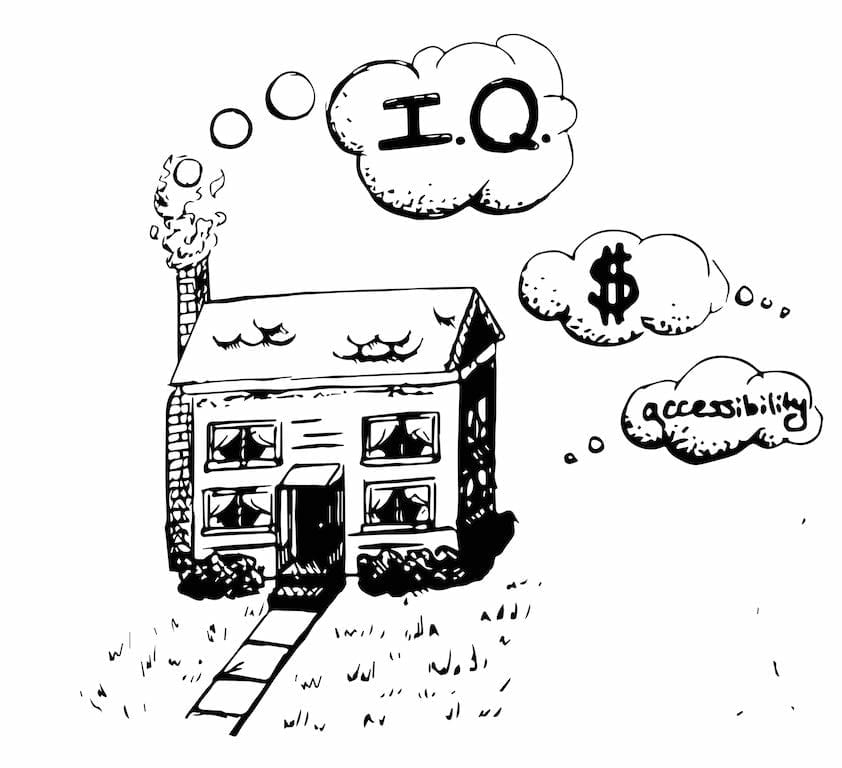To many, the idea of home automation belongs to the realm of science fiction. Nevertheless, this technology is appearing all around us. “Home automation” refers to the use of one or more computers to control basic home functions and features. These technologies have the capability to revolutionize the way in which we function in our natural environments, providing ease and luxury in our daily lives. On a more pressing note, these technologies also offer utility. With some work, the “smart home” may soon be adapted to provide more efficient and practical care for those who require assisted living.
The future of home automation must prioritize the less obvious consumers. Specifically, older folks and those with physical restrictions would benefit tremendously from home automation technology that is tailored to their needs. Taking into account the population as a whole, leading home automation companies such as Apple, Google, and Amazon are focusing their attention on a specific consumer base. Nowadays the tech industry tends to be dominated by the young, making it easy to overlook the fact that new products are not always as user-friendly as they might seem. Smart home devices allow customization of one’s surroundings with a simple touch of a button, but for many people even pressing a button is an impossible task.
As an example of where the home automation industry is headed, look no further than Apple’s latest iOS update. It has left many iPhone users puzzling over the appearance of a premiered app labeled “Home.” While this app’s unassuming façade of a simple house icon may seem unimpressive, it represents a key contribution to the field of home automation. Released in 2014, Apple’s line of smart home devices, called “HomeKit,” has only gradually gained popularity. With the release of the Home app, however, Apple is stepping up its game. The new application offers consumers a way to streamline their existing HomeKit technologies so that they can all be controlled from any iOS device.
Currently, there is a wide range of HomeKit products available to convert your house into a futuristic paradise. To name a few, there are adjustable multicolor lights, sleep-monitoring beds, and fridges with internal cameras to monitor the freshness of your food. There are also window shades that rise and fall on command; smart televisions with built-in internet and voice recognition technology (which act as a hub for your other Homekit advices); and smart “ISP5” plugs, which allow virtually any device to be controlled with the Home app. Using the Home app, you can create commands that will trigger one or more devices simultaneously. Another game-changing feature is the ability to control one’s smart home devices remotely, even from many miles away. Starting this fall, the number of compatible devices available is expected to grow faster than ever, providing consumers with increasing customization.
Apple’s advances with HomeKit are exceedingly innovative and praiseworthy. However, it is apparent the HomeKit system won’t appeal to everyone- high cost and limited accessibility features are sure to dissuade potential customers. Since smart home technology is a relatively new market, its few established brands have a virtual monopoly, allowing them to hike up their prices. But there may still be hope. One should expect that within the next few years, when enough businesses have joined the market for home automation, the affordability of owning a smart home will increase. Stand-alone smart home products such as Amazon’s “Alexa” and “Echo” already rival HomeKit in their success, and Apple is in the process of reviewing petitions from different tech companies for their hardware to be approved for compatibility with the HomeKit system.
Home automation has the power to grant autonomy to countless people who require assisted living, but sadly, the industry’s focus is drawn toward extravagance instead of health care. Although I can appreciate the posh standard of living that home automation attempts to create, it is my hope that 40 years from now technology will still be designed to cater to my needs. This technology should be built with all types of people in mind, so that nobody feels too burdensome or obsolete to enjoy its benefits. Studies show that aging in a familiar environment, commonly referred to as “aging in place,” is better for one’s cognitive function than being relocated to a home. Aging in place also provides a less expensive option for a resident’s family or caretaker. With automation built to suit their needs, members of our aging population would be able to stay in their homes longer and more safely.
According to a 2015 report from the US Census Bureau titled “An Aging World,” 8.5 percent of people worldwide are aged 65 and over today, and this percentage is projected to grow to nearly 17 percent of the world’s population, 1.6 billion people, by 2050. In view of our increasing inability to house and provide medical care for our aging at the exponential rates at which their population is growing, we must work to concentrate on simplicity of function with equal or greater emphasis than customization.The obvious challenge in designing a care-centered smart home is finding suitable ways to track a resident’s wellbeing, such as by providing their caretaker with updates on their movements and actions. This kind of “smart environment” would involve creating environmental and medical sensors. Robots could also be used to engage with the elderly, meeting their basic needs and providing them with the social stimulation that can be crucial to the prevention of early dementia.
To appeal to a broader population of consumers, a smart home must do more than create a luxurious lifestyle filled with fun new toys. Home automation has a long way to go before its price and accessibility features will be reasonable enough to meet the needs of the general public, but in the meantime, we should keep our hopes high for this promising new field and move to prioritize its potential for utility as much as its standard of luxury.
